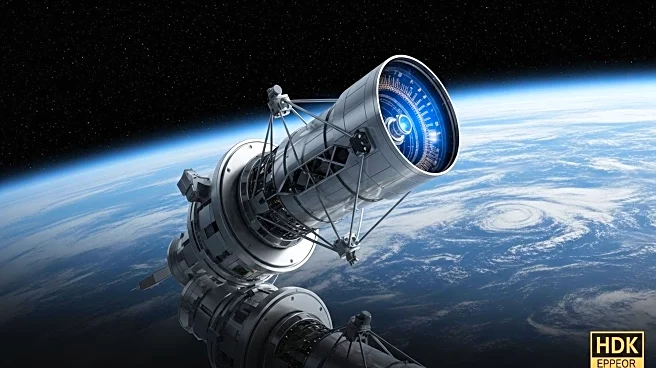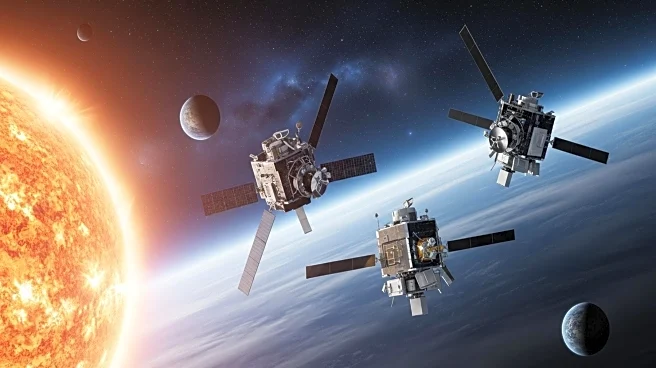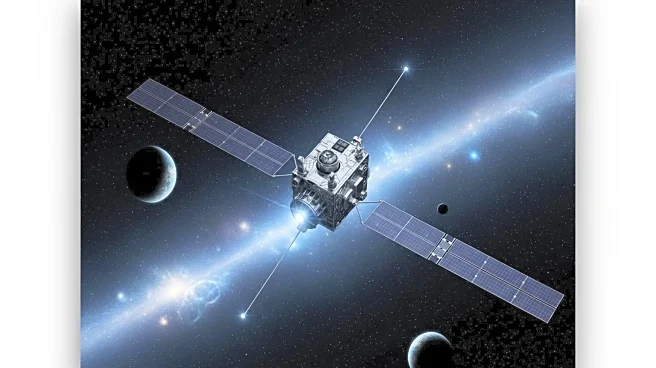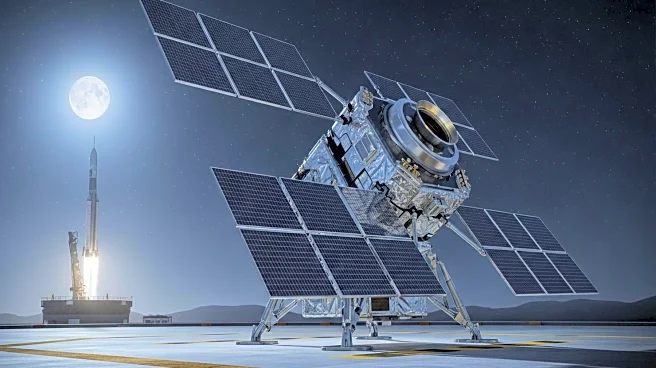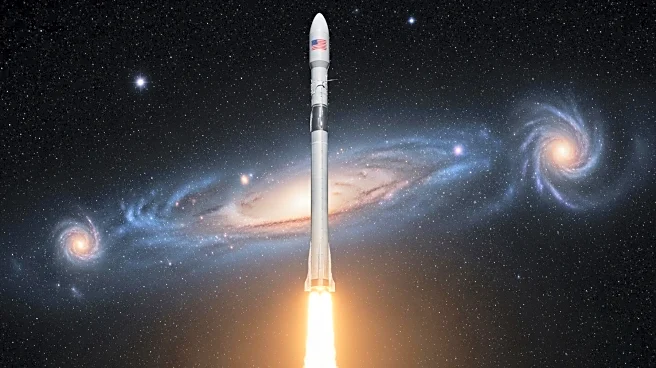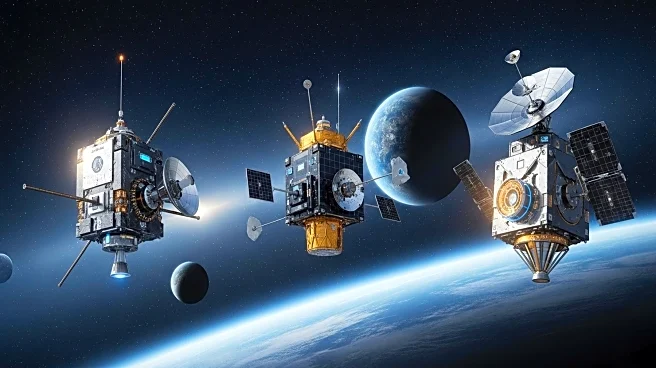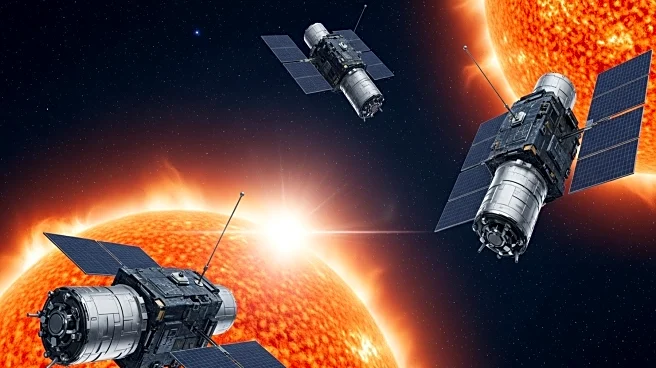What's Happening?
NASA's Carruthers Geocorona Observatory has successfully acquired a signal following its deployment from SpaceX's second stage. The observatory is set to study Earth's exosphere from Lagrange Point 1 (L1), a stable orbital position where the gravitational pull of Earth and the Sun is equal and opposite. The mission aims to provide continuous observations of the exosphere, allowing scientists to create a 3D structure to study its shape, size, and density. Named after Dr. George Carruthers, a pioneer in ultraviolet instrumentation, the observatory will send data back to Earth twice a week through the Deep Space Network.
Why It's Important?
The Carruthers Geocorona Observatory's mission is significant as it will be the first NASA small satellite to operate at L1, providing continuous exospheric observations. Understanding the exosphere is crucial for predicting space weather impacts on technology, including satellites and communication systems. The data collected will enhance scientific knowledge of Earth's atmospheric response to solar activity, potentially improving forecasts and mitigating risks associated with space weather events.
What's Next?
The observatory is planned to operate for at least two years, with enough fuel to extend its mission up to ten years. Scientists will continue to monitor the observatory's data transmissions, which will contribute to ongoing research on Earth's exosphere and space weather phenomena. The mission's success could pave the way for future small satellite missions to L1, expanding NASA's capabilities in space weather monitoring.
Beyond the Headlines
The Carruthers Observatory's deployment marks a milestone in space exploration, highlighting the importance of small satellite missions in advancing scientific understanding. The mission honors Dr. George Carruthers' legacy, whose work in ultraviolet instrumentation has been instrumental in space science. The observatory's findings could lead to new insights into the fundamental physics of Earth's atmosphere and its interaction with solar activity.

